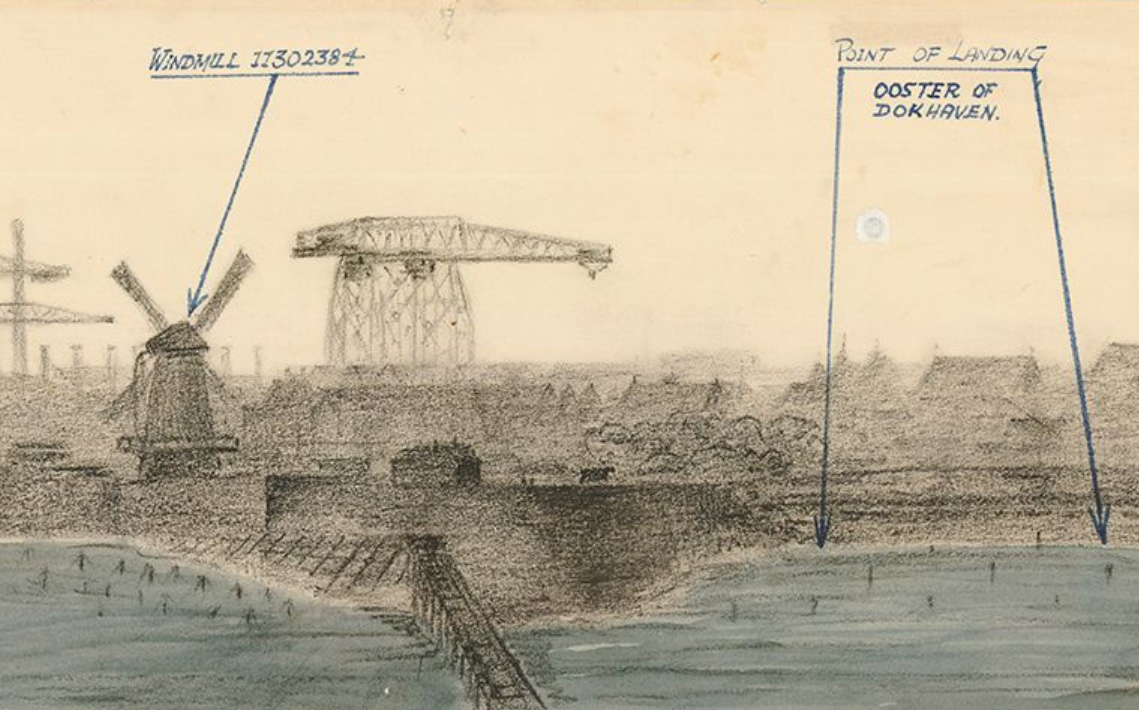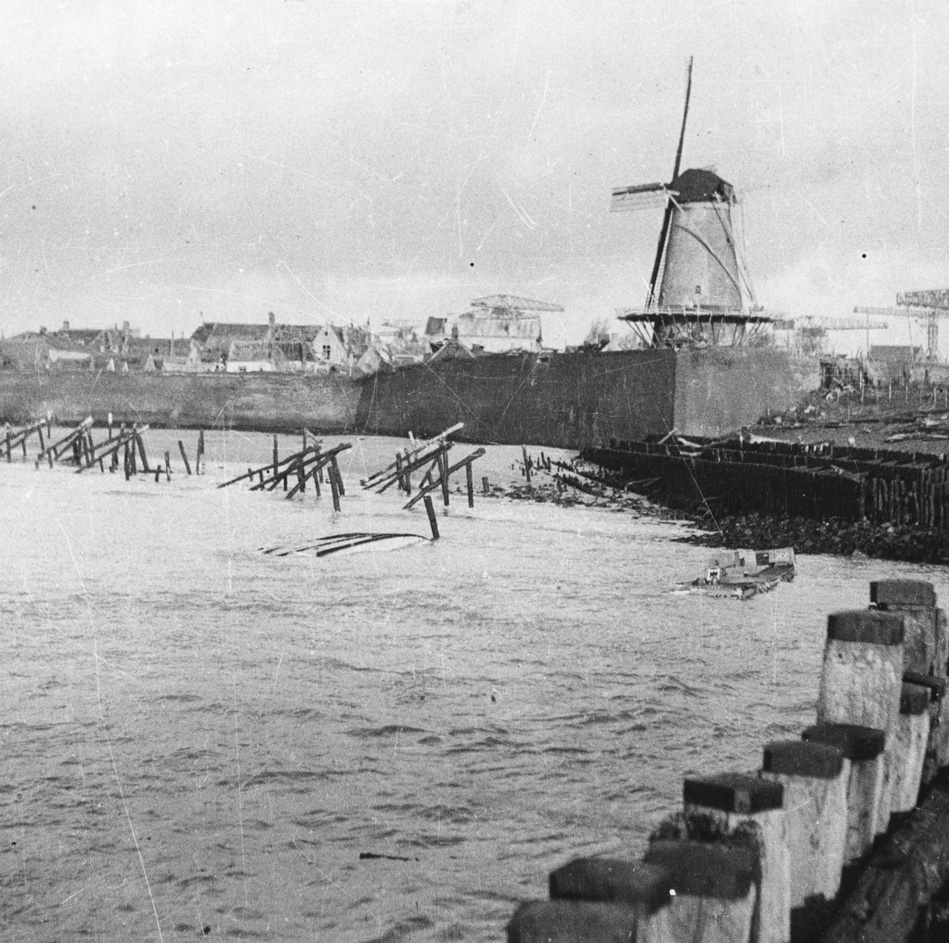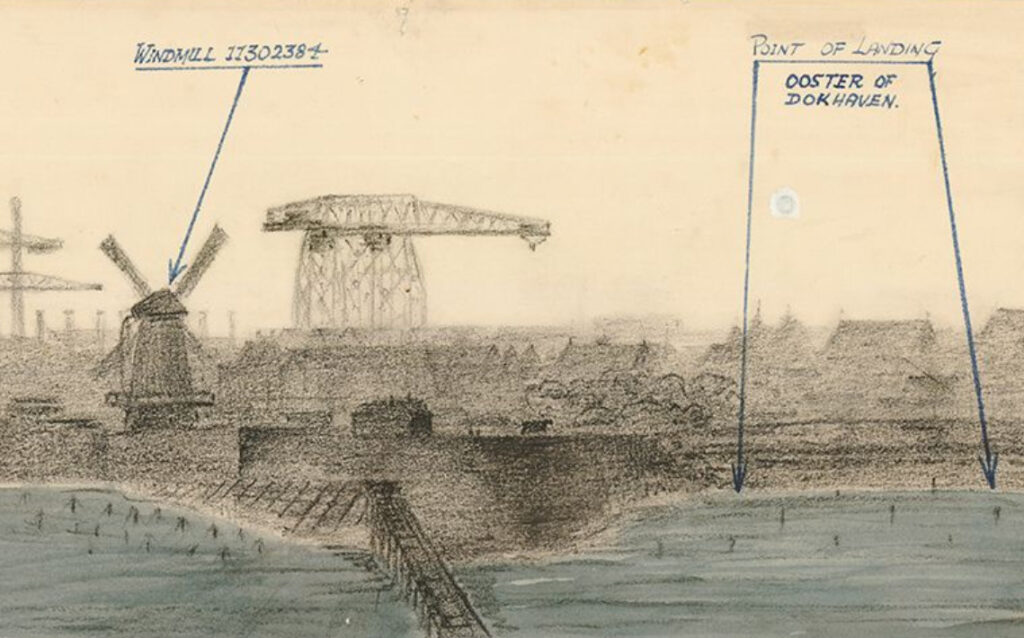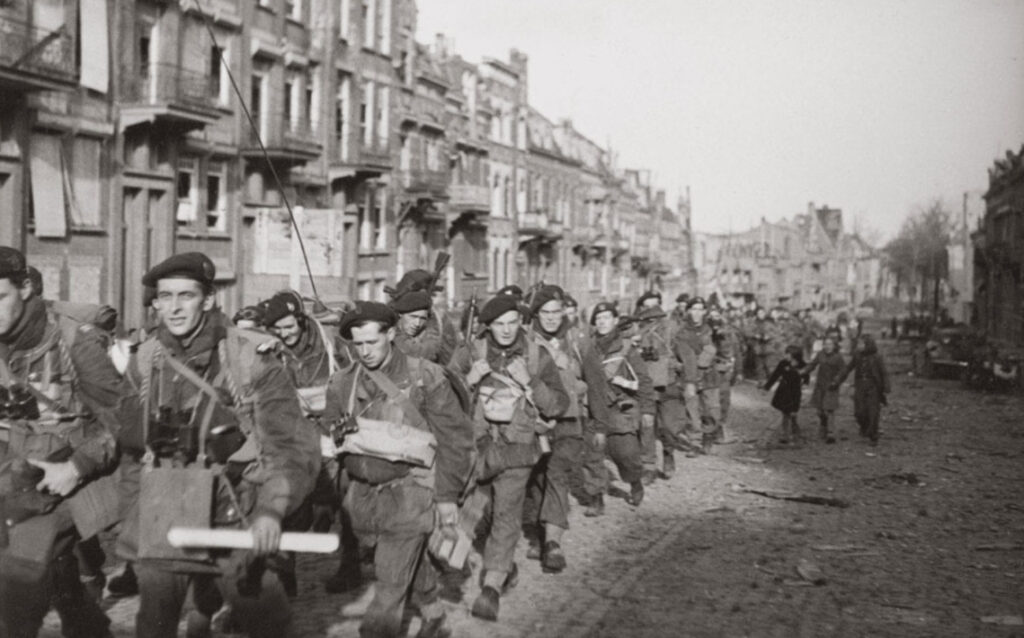No products in the cart.


Object of the Month – August 2025
Vlissingen in Sight – 1944
On 1 November 1944, an Allied amphibious landing took place near Vlissingen under the codename Operation Infatuate I, as part of the Battle of the Scheldt. The objective of this operation was to capture Walcheren Island in order to secure access to the port of Antwerp. The landing beach was given the codename Uncle Beach.
Orientation for troops from the sea
Prior to the attack, British and Norwegian commando units were issued this specially produced silhouette map of the Vlissingen coastline. The map depicts the city’s skyline as seen from the sea, drawn for use at night. Key landmarks—such as the tower of the Sint Jacobskerk, the statue of Michiel de Ruyter, industrial cranes, a windmill, and dockyard areas—are marked with coordinates. These visual reference points helped the troops orient themselves in the dark and land at the correct location.


Tactical aid on paper
The map was produced on the orders of Captain K.G. Wright, intelligence officer with No. 4 Commando. This elite unit played a key role in the assault on Vlissingen’s coastal defences. Drawn in pencil and wax crayon, the map combines military precision with practical simplicity.
The silhouette map is not only a tactical aid, but also a rare visual document of a decisive moment in the liberation of the Netherlands. It illustrates how meticulously the Allied operations were prepared—down to details such as the nighttime recognisability of buildings and infrastructure.
Vlissingen as the key to Antwerp
The silhouette map is not only a tactical tool, but also a rare visual record of a decisive moment in the liberation of the Netherlands. It reveals the meticulous planning behind Allied operations—down to details such as the recognisability of buildings and infrastructure in the dark.
Uncle Beach and the assault on Vlissingen marked the beginning of the successful liberation of Walcheren—a crucial step in opening up the shipping route to Antwerp and enabling the Allied supply chain.


